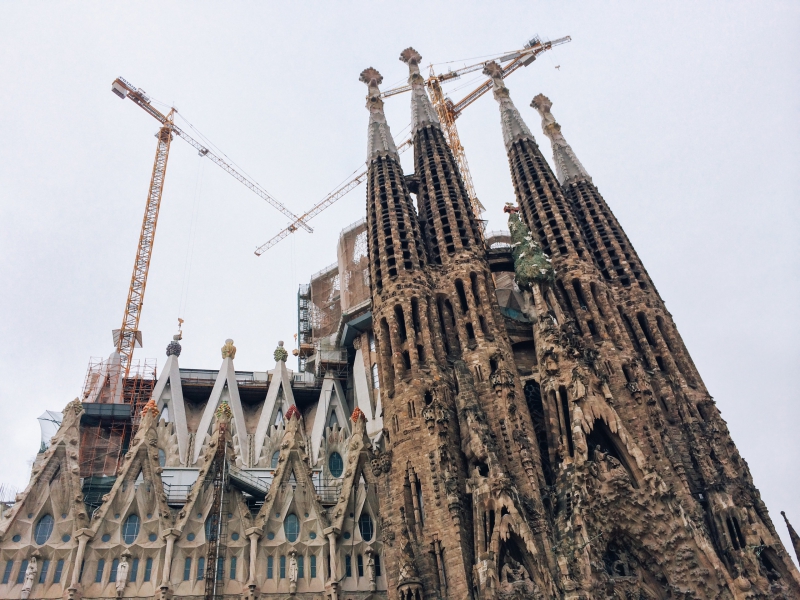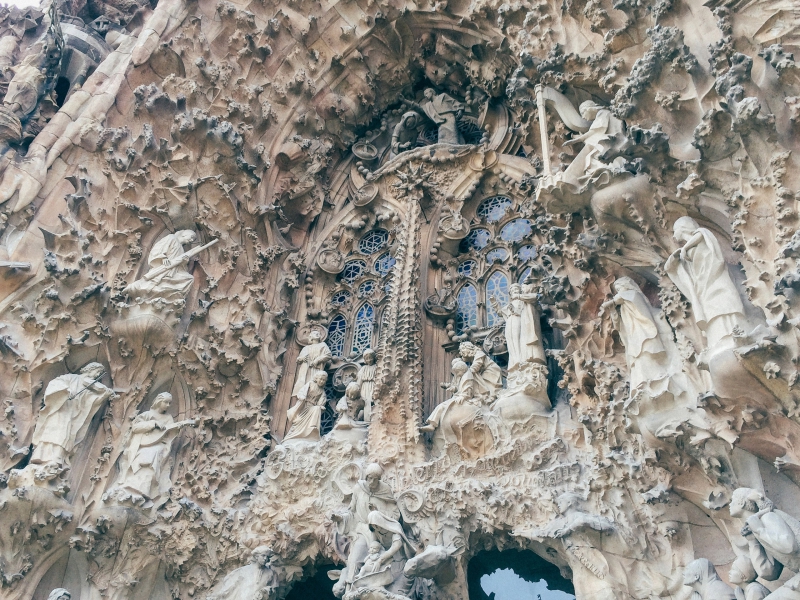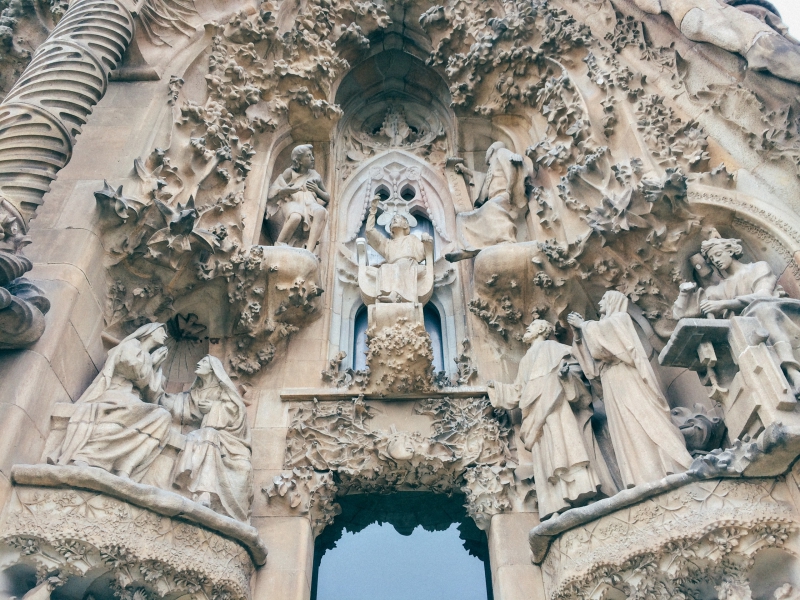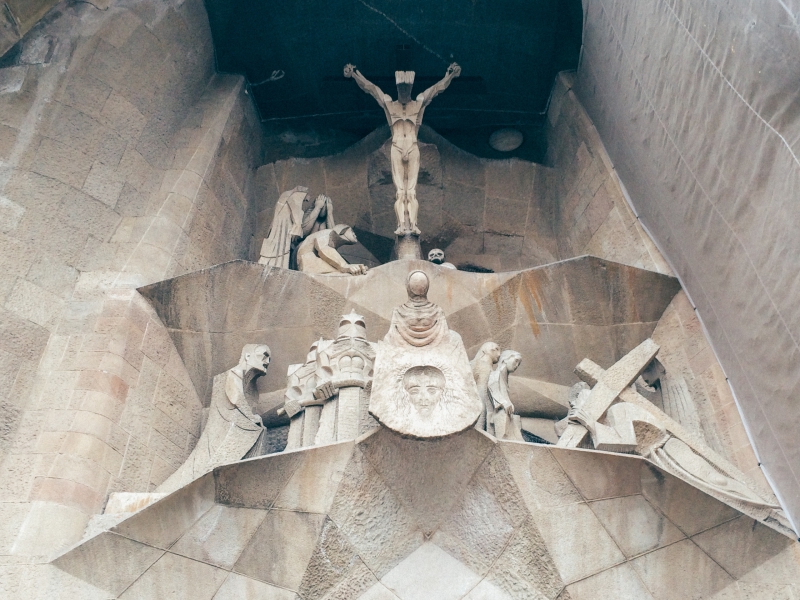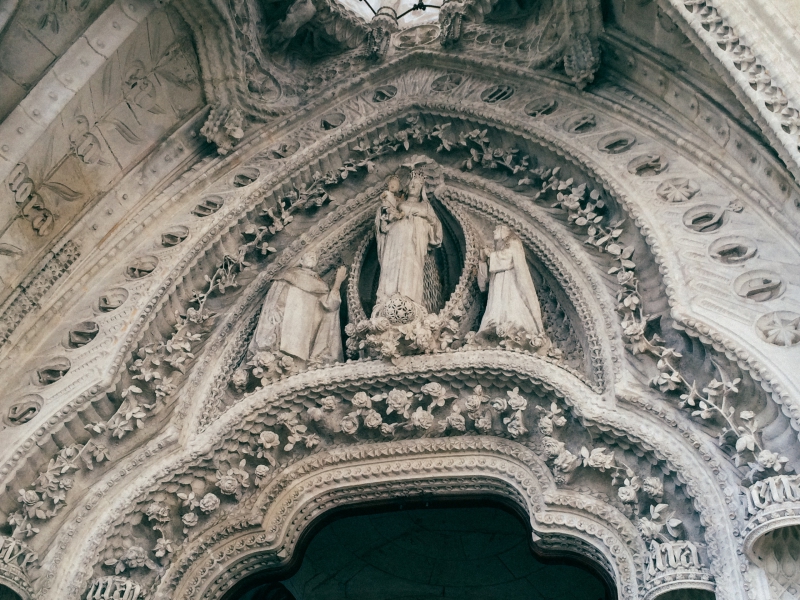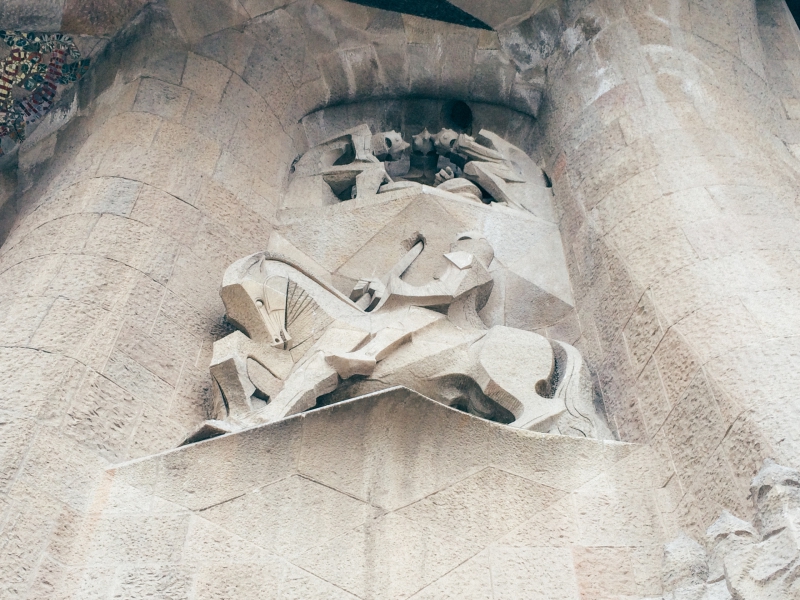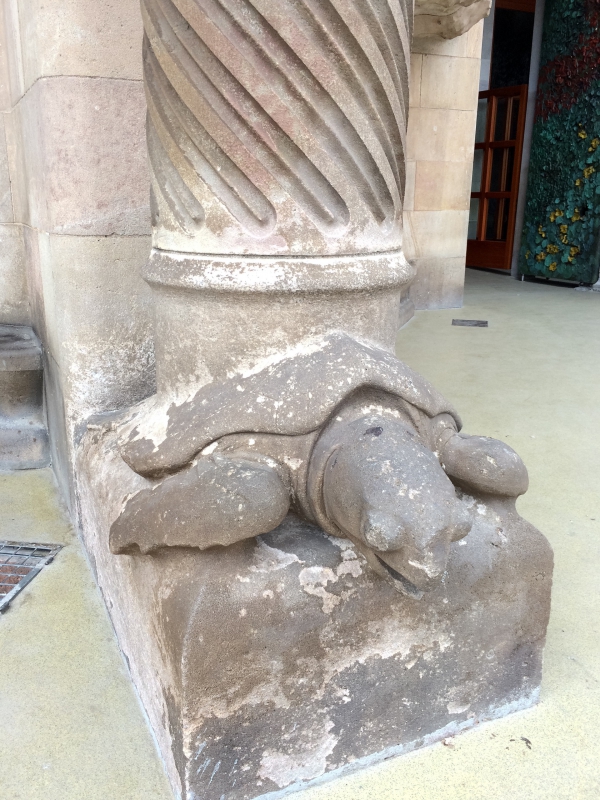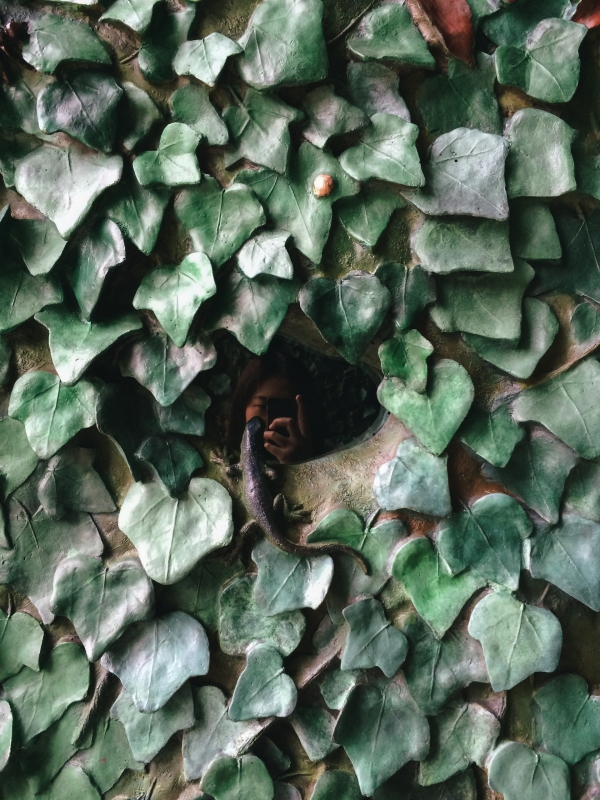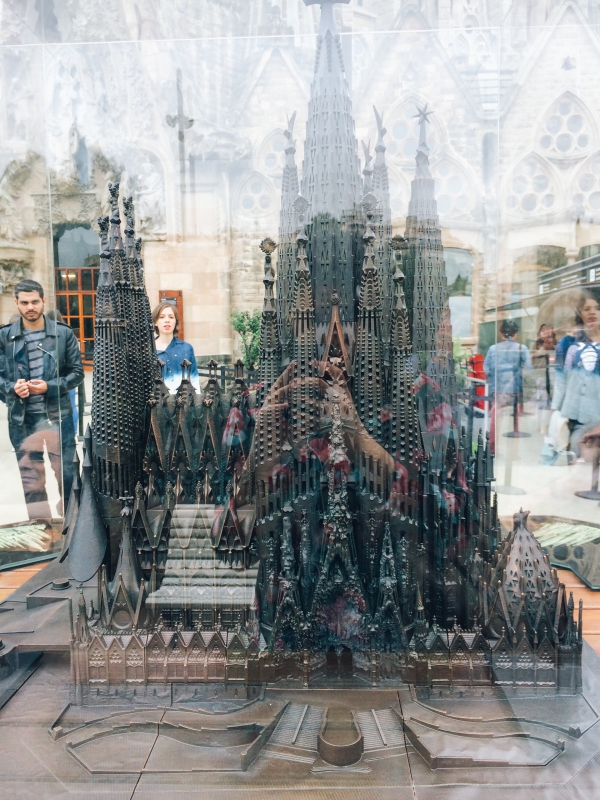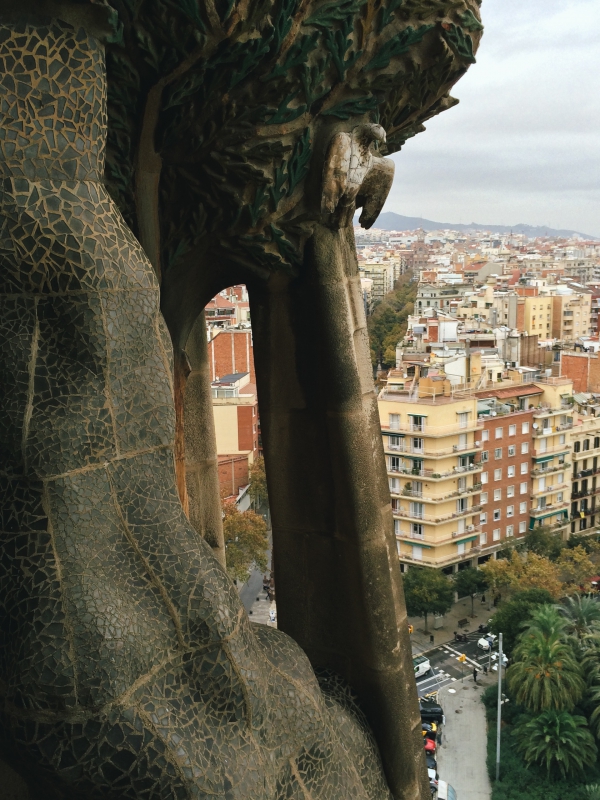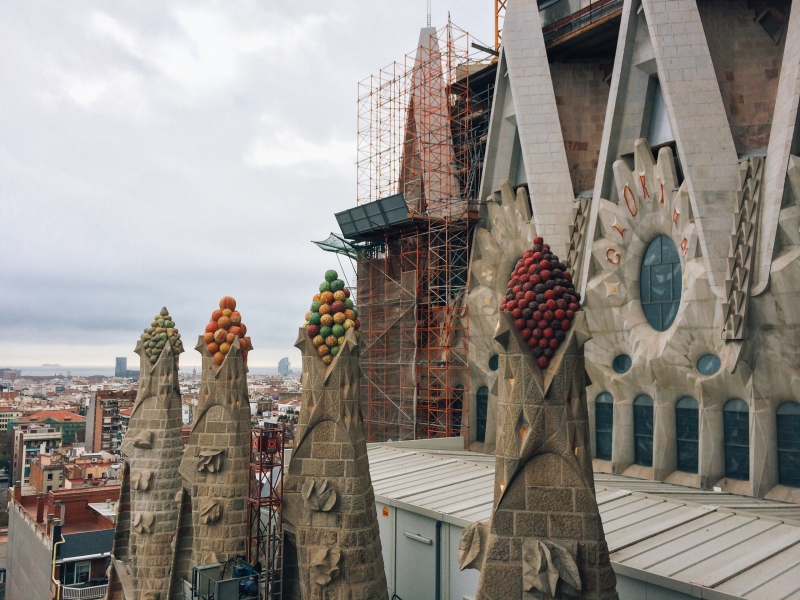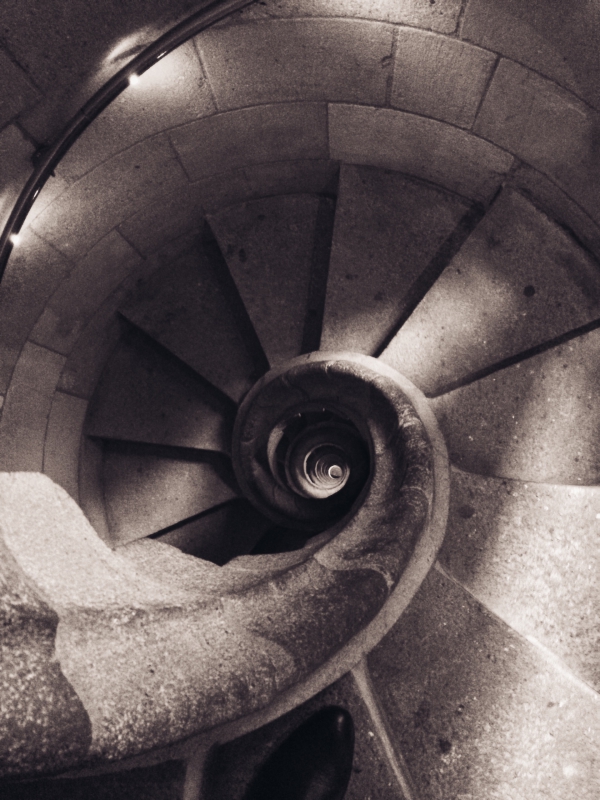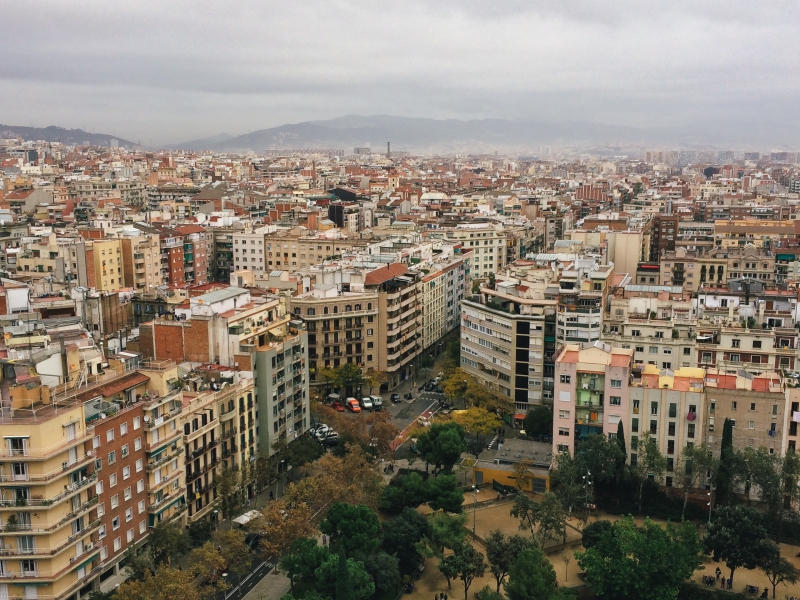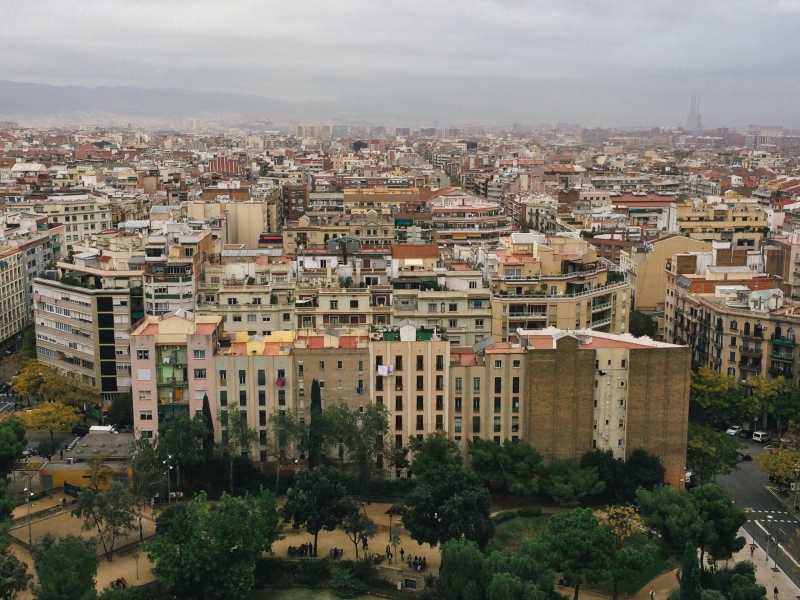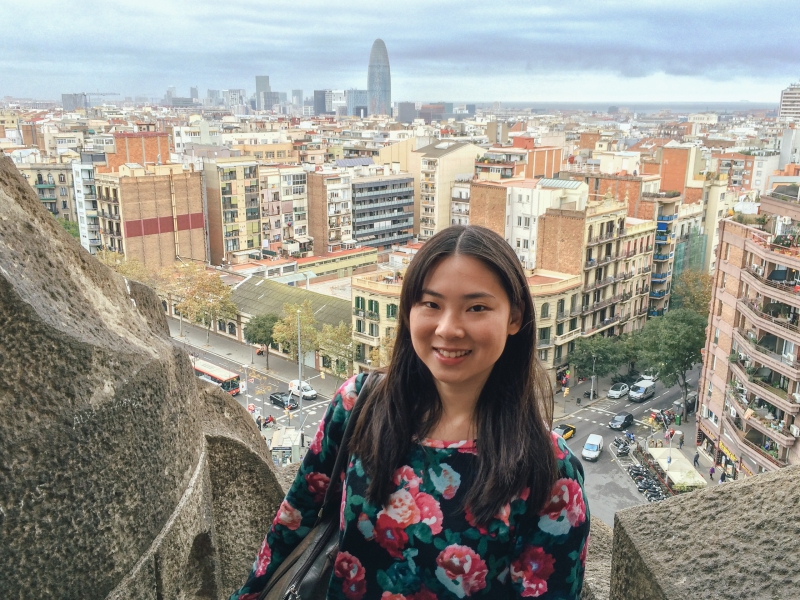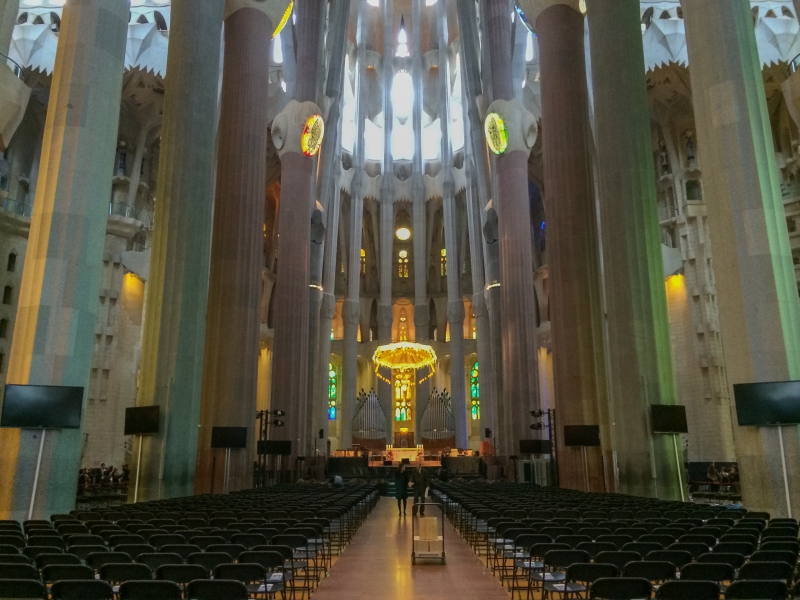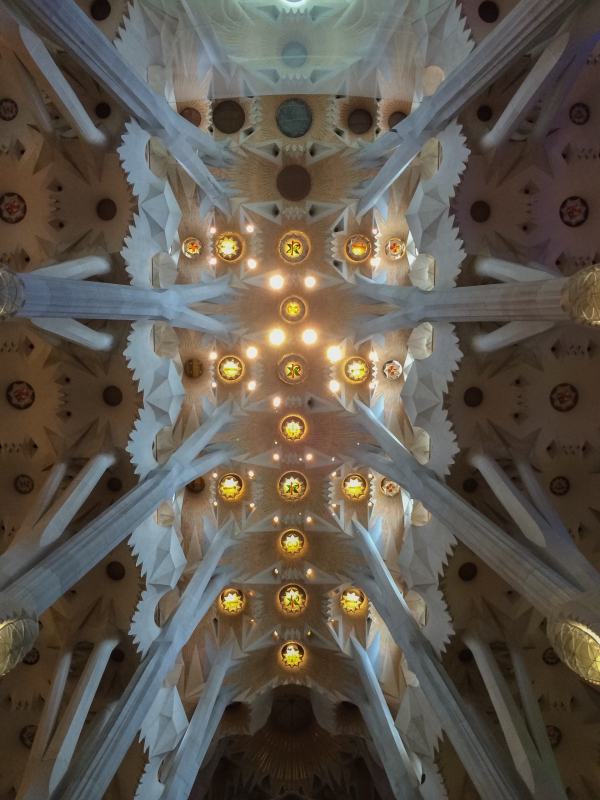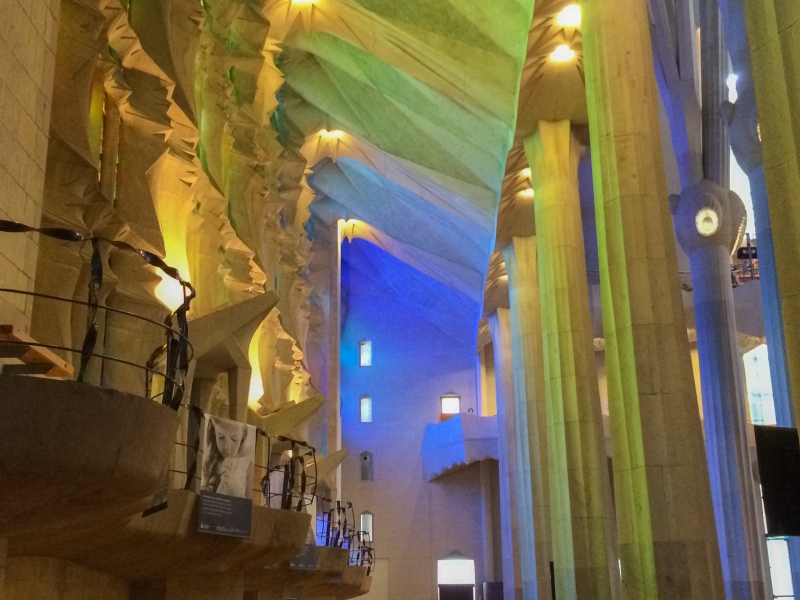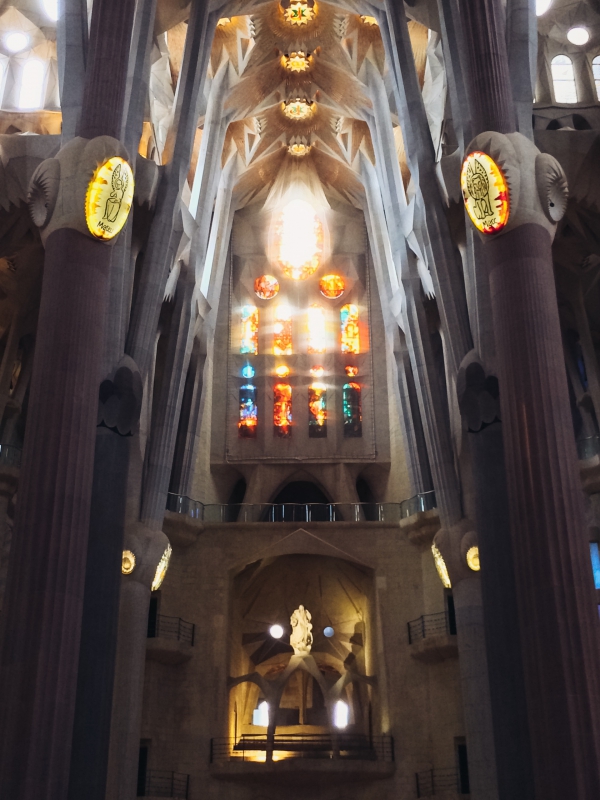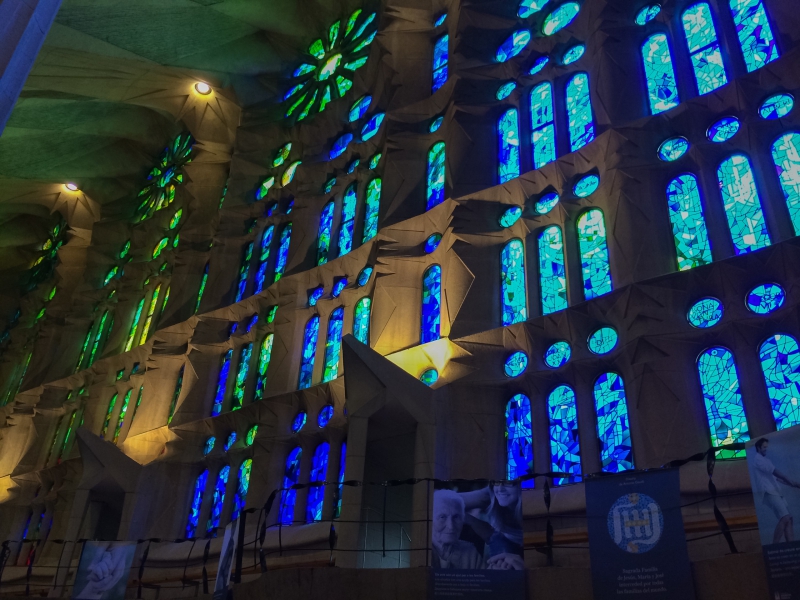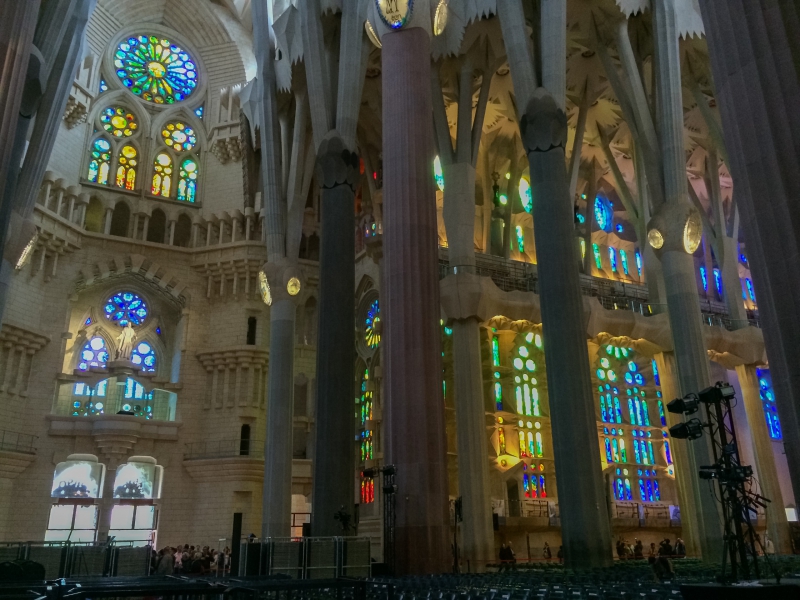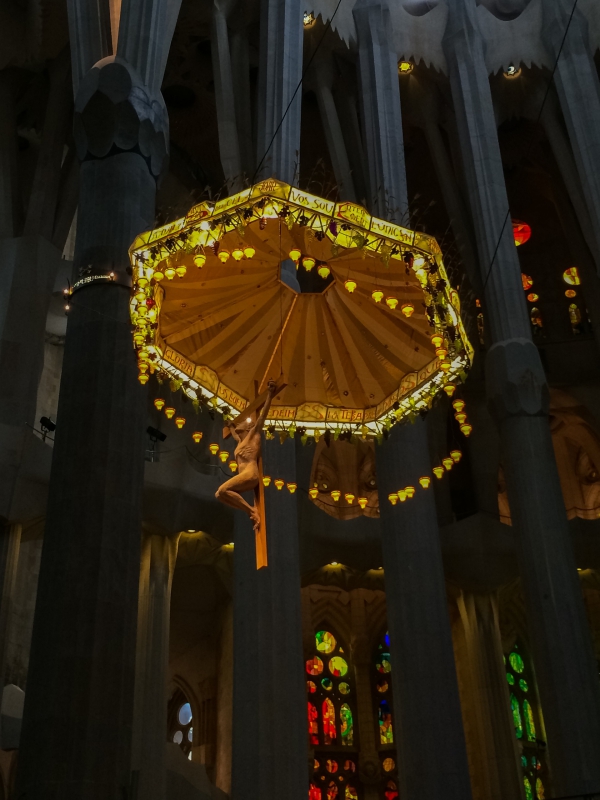On our third day in Barcelona, N- and I made our way to Sagrada Familia, an iconic church and the most popular destination in the city.
The History
Officially named the Temple Expiatori de la Sagrada Família, the basilica was initially designed as a neo-Gothic structure by the architect Francisco de Paula del Villar. Construction began in 1882.
Antoni Gaudi took over the project in 1883 after del Villar abandoned it. Gaudi decided to scrap the original design and proposed the Sagrada Familia we know today—a grand church that holds a wealth of religious symbolism within its walls.
Gaudi worked exclusively on Sagrada Familia from 1914 until his death in 1926, when the basilica was less than one-fourth completed. Since then, various architects, engineers, and sculptors have continued the work. The construction is set to finish in 2026.
First Impressions
I have to admit—I’d seen my fair share of churches throughout the trip so far. I looked forward to interesting architecture in Sagrada Familia, but I was unprepared for what awaited us.
My first thought when I saw the basilica: “Wow.”
My second thought: “What in the world is this?”
The spires looked like enormous brown corn cobs, towering above the city with pride.
The Exterior
As we drew closer, I realized this was not so much a building as a large, elaborate sculpture.
Lively figures celebrated the birth of Jesus on the Nativity facade. A grave diorama evoked fear on the Passion facade. Grapes and wheat crowned the rooftops, representing bread and wine. Sculpted leaves covered the doors, butterflies and ladybugs peeking out among them. A tortoise sat at the foot of a column. No detail was left unthought of.
View from the Towers
They had elevators—a notable feature when it comes to European churches. We took one up its tower, then we used the spiral stairs and corridors to go up, down, and across towers. We also found a balcony with a lovely view of the city.
Inside the Basilica
The church had a calming aura that you felt the moment you entered.
There was something in the way the light filtered through the windows and filled the space. It was almost… reverent.
Sagrada Familia had the most beautiful stained glass windows. Unlike many other churches’, they didn’t come in a geometric pattern or depict detailed scenes from the Bible. Instead, they were made in gradients. Colors flowed from one hue to the next. Reds into oranges and yellows. Greens into blues and purples. These windows looked as if they were created to celebrate light and color itself.
I also loved how the columns rose up and branched out like trees, turning the ceiling into a forest canopy.
Crowds and Construction
Sagrada Familia was the most crowded place we visited in Barcelona—in addition to Casa Batllo, another of Gaudi’s masterpieces.
And there was definitely construction. For some reason, I’d thought this was part of its draw as a destination (“They’ve been building it for a century!”). But it was a reality—workers in several places, noise from machinery, construction materials, the works.
For the most part, though, I was too fascinated by the beautiful surroundings to notice.
Gaudi’s Legacy
Gaudi died at 73 after being hit by a tram. Almost a century later, his magnum opus is still being brought to life. The church is funded entirely by donations. Millions of visitors come to see it every year.
He left the people of Barcelona this incredible basilica. It got me thinking—am I going to leave any legacy in this world? Will anyone remember me a hundred years after I die?
It’s strange to think I might leave nothing behind. It seems to be human nature to create something that survives us. Children are the most common. But there are also paintings, sculptures, books, films… and, of course, basilicas.
So confident was Gaudi of his legacy that he said, “There is no reason to regret that I cannot finish the church. I will grow old but others will come after me. What must always be conserved is the spirit of the work, but its life has to depend on the generations it is handed down to and with whom it lives and is incarnated.”
And so it lives. Without a doubt, Sagrada Familia is one of the most remarkable architectural works in existence. I’m grateful I had the opportunity to see it.
